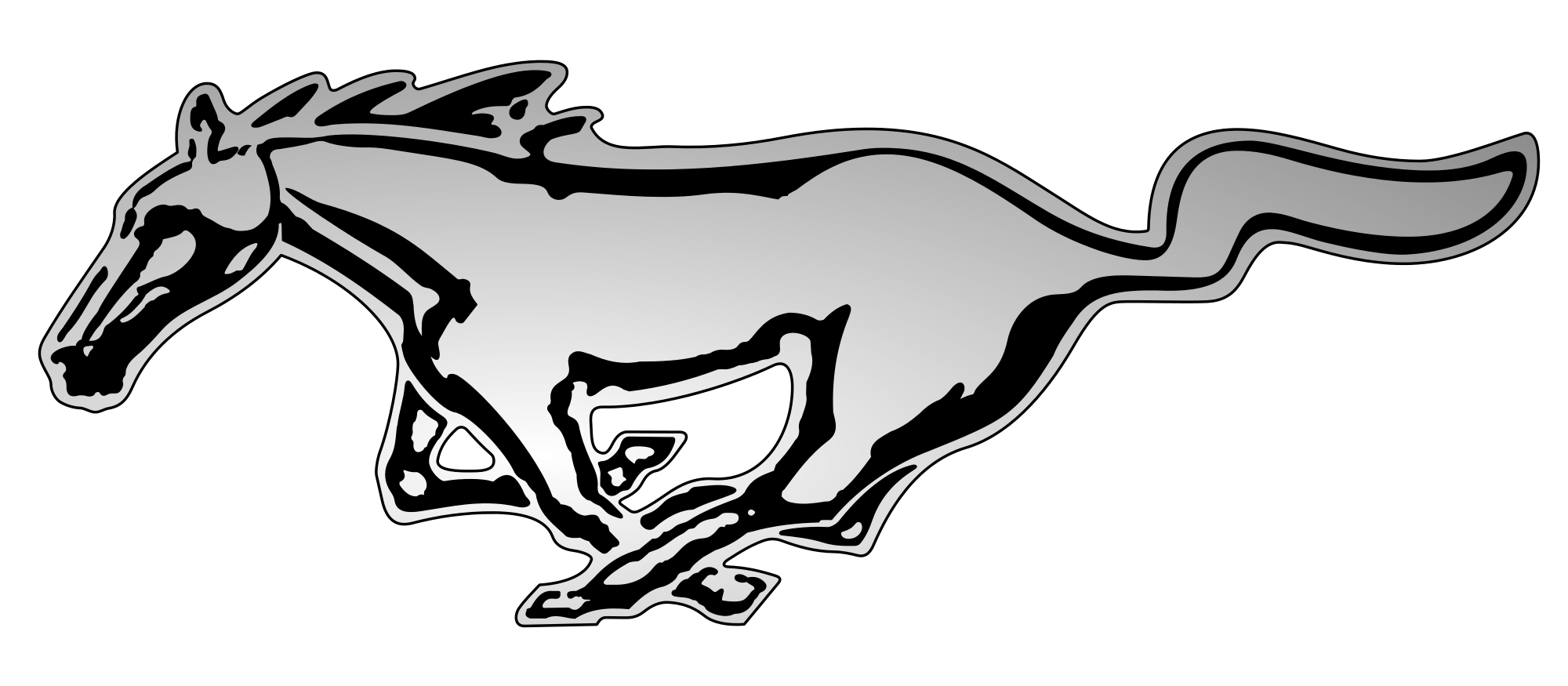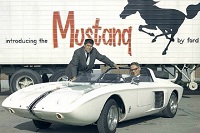 |
Original
Concept - 1962 |
Click on a photo to enlarge











From its very inception, the Mustang was
foreseen as a sporty performance car. The realities of the day
placed Ford’s pony car onto a Falcon chassis for production, but
many of the original design concepts stayed with the car from its
real beginning in 1962.
The very first Mustang was an experimental or concept car, intended
to showcase new ideas and draw customers into Ford dealers’
showrooms. The company’s success with the Falcon sedan confirmed
America’s new-found acceptance of smaller cars, competing with GM’s
Corvair sedan, introduced in 1959. GM had brought out the Corvair to
compete with the Volkswagen Beetle, which had been gaining sales
momentum since the mid-1950s.
In 1962, GM released the Corvair Monza Spyder convertible,
maintaining the VW-inspired rear engine design, but adding a
turbocharger which raised the engine output to 150 hp. At 2675
pounds for the convertible, performance was more in line with a
sporty image. The buying public agreed, and GM built over 300,000
Monza Spyders that year.
Pause for a moment to reflect on this series of connections and you
could come to the conclusion that were it not for the VW Beetle, we
might not have the Mustang as we know it today. A bit frightening,
that.
Ford needed to respond to the Monza Spyder, so three key executives
were involved in defining and building the original concept car.
They were Gene Bordinat, vice president of styling, Herbert Misch,
vice president of engineering and research, and Roy Lunn, manager of
the Ford Advanced Vehicle center.
In just three weeks, they moved the car’s concepts off paper and
onto a clay model. Lunn’s background at Ford Europe led the team to
choose a rear-mounted, 60-degree V4 engine used in Europe. Much of
the internals followed race car design practices of the time, with a
load-bearing aluminum skin over a tubular steel chassis. Under that
aluminum skin, you would also find a wishbone suspension using coil
springs and shocks, a rack and pinion steering gear, front disc
brakes with rear drum brakes and a four-speed transaxle.
The engine was cooled by two small radiators set at the sides of the
car, just ahead the rear wheels. Those cooling inlets have remained
a part of the Mustang’s styling DNA ever since. Two Mustang I cars
were built by Troutman-Barnes of Culver City, California. One was
fully functional, while the other was a fiberglass mockup for
display purposes.
In October of 1962, the Mustang concept broke cover at the Formula 1
race in Watkins Glen, NY. Both Dan Gurney and Sterling Moss drove
the Mustang for several demonstration laps around the race course.
With 109 horsepower in a car weighing just 1544 pounds, the Mustang
was capable of a 115 mph top speed. Designed both to FIA and SCCA
requirements, the car was an immediate hit within the racing crowd.
That success, however, did not carry over to the general public. In
point of fact, the Mustang I was not a particularly suitable design
for a production car. That work would carry on in earnest over the
next eighteen months, resulting in a second concept car that was
much closer to the wildly successful design, introduced at the 1964
World’s Fair at Flushing Meadows in Queens, NY.
Today, the Mustang I concept car resides in the Henry Ford Museum in
Dearborn, MI. Anybody can stop by and take a close look at Mustang
history, instead of just reading about it. Currently parked beside
the original #1 production Mustang, you will wonder at the small
size of the car.
|